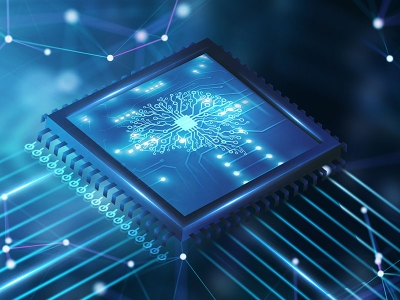For some people, the words Artificial Intelligence (AI) and Machine Learning (ML) may conjure images of a dystopian world of machines, which are stronger, think faster, have no morality, and seek to either enslave or destroy mankind. Others may view AI through a utopian lens, as an idyllic existence where autonomous machines see to our every need.
However, the reality is much different than popular fiction. In fact, AI and ML have longer and far more humble roots. The commonly accepted birth of AI/ML, as we know it today, was in the late 1950’s, primarily with researchers at IBM’s Watson Computing Center in New York, where they taught computers to play simple board games like Tic-Tac-Toe and Checkers.
Of course, AI and ML aren’t just used for board games or other recreational pursuits. Advanced AI and ML have become crucial to the Intelligence Community’s (IC) ability to compete with adversaries like China and Russia, who are both aggressively pursuing AI/ML programs for intelligence and military purposes.
But the IC has a problem: existing AI and ML algorithms are hosted on high-performance general-purpose devices that are costly, too big, and demand considerable energy resources. Moreover, to utilize these systems in fieldable or remote locations requires reliable connectivity to edge sensors, the cloud, and a data center(s).
This is where the Intelligence Advanced Research Projects Activity's (IARPA) MicroE4AI program comes in. MicroE4AI’s goal is to drive innovations in hardware/software and algorithm-architecture to improve the performance of AI and ML applications by using highly efficient, edge-capable microelectronic devices. Additionally, MicroE4AI is investigating new fabrication processes and materials potentially improving performance, reducing size and weight requirements, and minimizing energy demands for future AI and ML devices.
Ultimately, the intent behind MicroE4AI is to deploy AI and ML capable devices to edge computing applications. In turn, these will efficiently and independently act upon and forward critical intelligence information that will contribute to the generation of high-quality intelligence products that benefit the IC and promote national security.
“When fully realized, the advances the MicroE4AI program will bring to AI and ML will be closer to the edges of the IC cloud, automating and enhancing the effectiveness of the IC’s mission,” said MicroE4AI Program Manager, Noel Wheeler. “This means the IC will have the ability to more quickly sift out high quality information, while minimizing the need for human oversight.”
Some possible applications include AI-based smart sensors, navigation systems for Unmanned Autonomous Vehicles (UAVs), hybrid analog/digital/photonic computation, and advanced diagnostics and tamper detection for microelectronic devices.
Performers selected to work on MicroE4AI include firms and universities with years of experience in various aspects of the program. For example, Intel and Chipscan are researching device integrity; SRI is developing Advanced algorithms and training data management; Arizona State University and Georgia Tech Research Institute are researching Ferro-electrics; General Electric is investigating novel MEMs technologies; and GenXComm and U.C. Davis are investigating photonic processing.
“With the diversity and quality of our performers, I’m confident that when MicroE4AI concludes, our team will be able to demonstrate numerous next-generation AI/ML microelectronics capabilities that will become an important part of our nation’s security,” Wheeler said.

